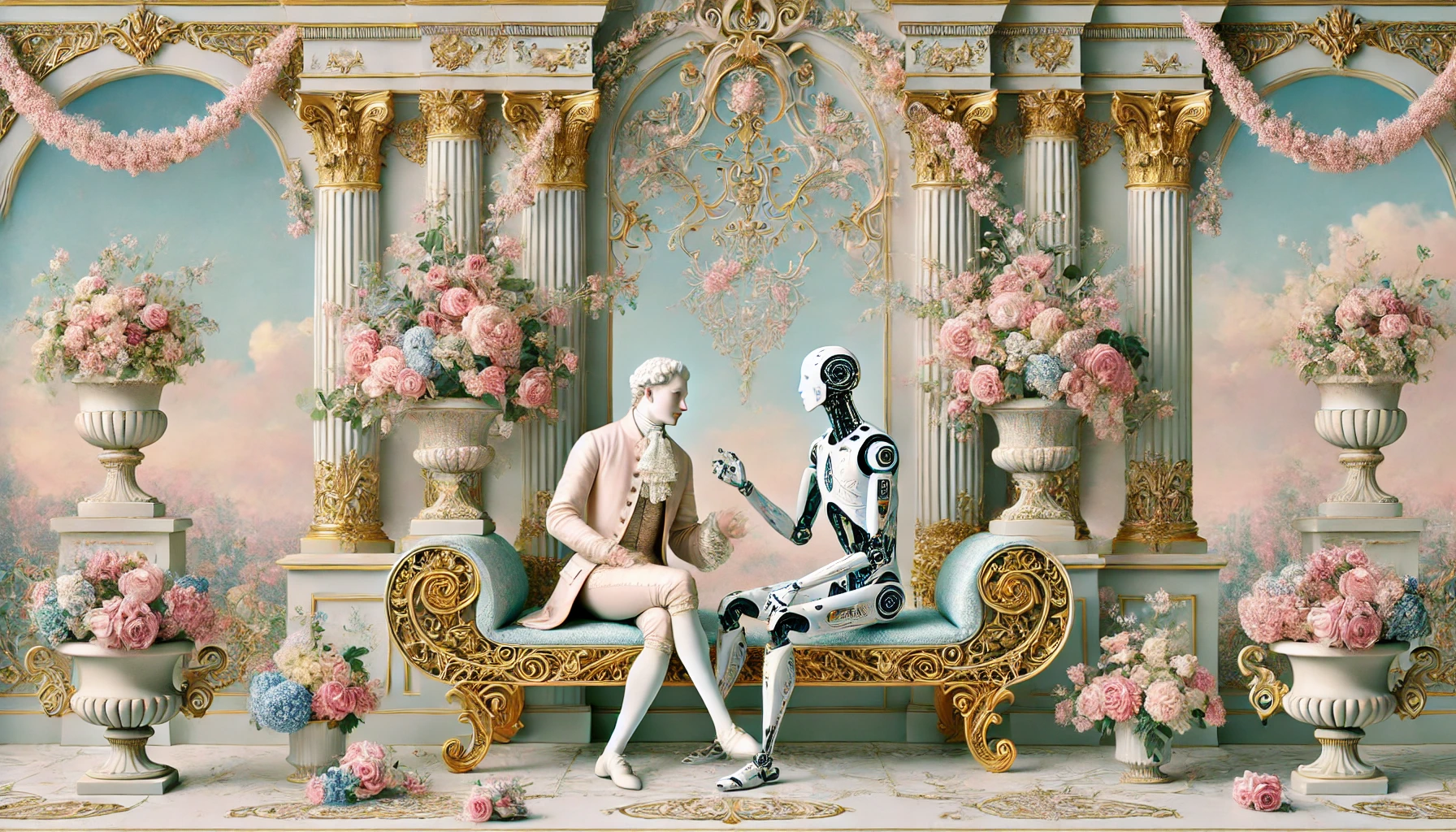Ted Chiang, believes that AI art isn’t real art; It is just mimicry due to the fact that the human decision making process is alien to a machine. There are also arguments that there is a lack of emotion behind a computer’s decision making process. And that’s not taking into account the copyright issues.
In terms of writing, Chiang argues that based on limited human input artificial intelligence takes an average from the data that it has “learned” from. Perhaps without continuous human creation, creativity will regress to a mean – essentially a copy of a copy, creating works that gradually lose depth and originality, whether you call it art or not.
But do humans not study the history of art, attempt to imitate their favourites or follow their tutor’s guidance? Perhaps prompting artificial intelligence doesn’t allow spontaneity or innovation. But it could at least be a good way for overcoming a creative block or generating concepts that can be built upon?
For example, what about an image of a sea wizard—with a gun—painted in the Rococo style by somebody imitating Caravaggio? As absurd as the prompt may seem, the resulting image—or any of the following—, could certainly serve as inspiration for any artist that is so inclined to use it.
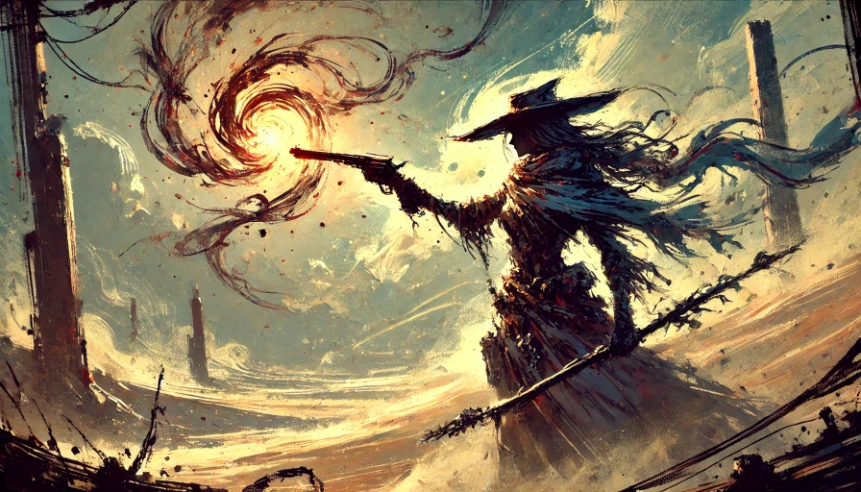
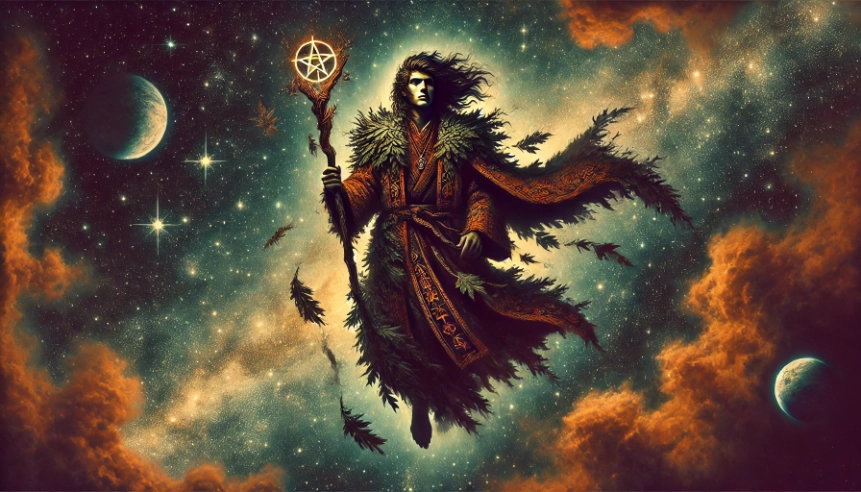
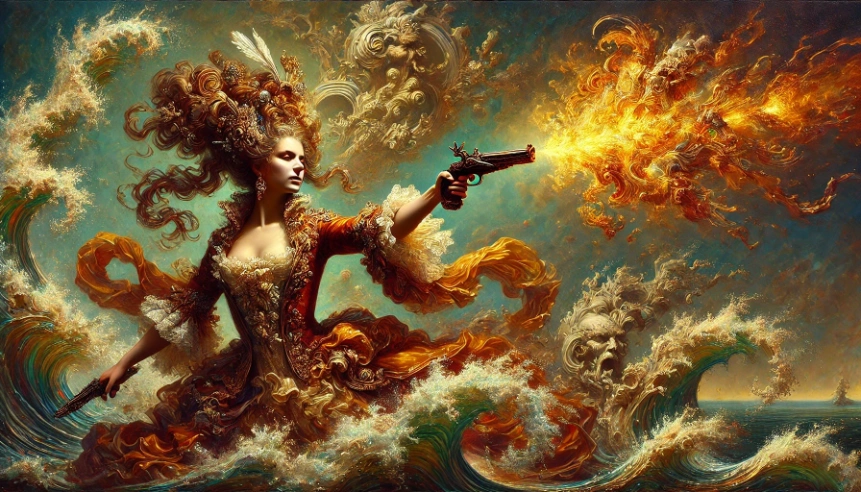
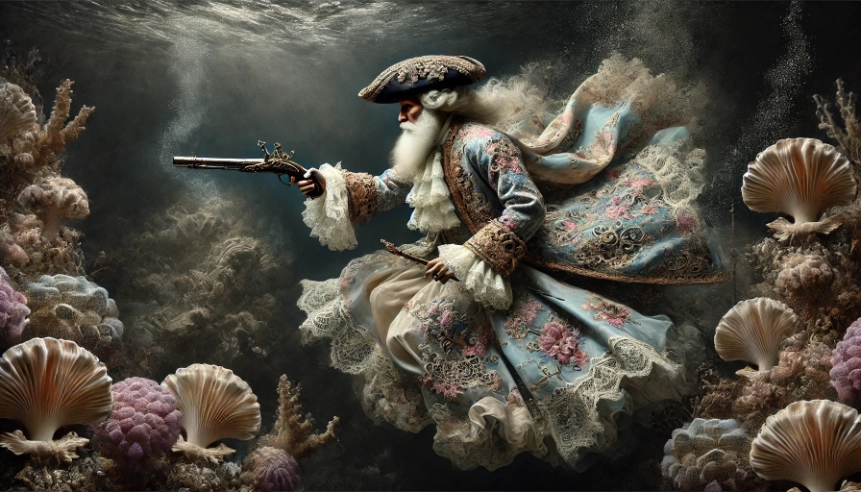
And what about Art created by AI that has sold for hundreds of thousands of euros? Do we really have a problem with AI creating art, however you might define it, or do we have a larger cultural issue with humans turning art into an asset?
This continuation looks at what ChatGPT “sees” as the challenges and possibilities that arise in the creation process.
Overview of AI Art and Creativity
Objective: To explore how the collaboration between humans and AI influences the generation of new ideas, focusing on the nature of creativity, the evolving roles of human intuition and AI suggestions, and the implications for originality and authorship in co-created works.
Key Themes: The evolving concept of creativity and innovation, the balance between human intuition and AI computation, the challenges and redefinitions of originality and authorship, and the ethical and philosophical dimensions surrounding human-AI creative collaboration.
1. Understanding the Nature of Creativity
Creativity is a cornerstone of human innovation—an essential aspect of art, science, philosophy, and beyond. Before examining AI’s role, we must explore the complexity of how humans generate fresh ideas.
Key Points:
- Philosophical Perspectives on Creativity: Ancient and modern theories from philosophers and psychologists on how new ideas arise. Contrasting views—creativity as a divine spark, a learned skill, or an emergent property of human cognition.
- Complexity of Human Thought Processes: The subconscious role in idea formation. Influence of culture, experiences, emotions, and intuition in shaping creative insights.
2. AI as a Catalyst for Innovation
While AI doesn’t inherently possess consciousness or self-awareness, it can introduce unexpected elements that spark human creativity. This section explores how humans leverage AI to break free from cognitive ruts and discover novel paths.
Key Points:
- AI-Generated Prompts and Inspiration: Tools like machine learning models suggesting new motifs in art, unconventional research hypotheses, or fresh narrative angles. Case studies where AI has contributed to breakthroughs in various fields.
- Enhancing Human Ingenuity: Viewing AI as a brainstorming partner that challenges assumptions. AI as a resource to overcome creative blocks and introduce unconventional ideas that provoke human reinterpretation.
3. Human Direction Shaping AI Outputs
Although AI can inspire novelty, it operates within parameters set by humans. This interplay ensures human agency remains central to guiding creative processes.
Key Points:
- The Importance of Prompts and Context: Clear, purposeful prompts lead to more meaningful AI-generated suggestions. Human direction and feedback refine AI outputs, aligning them with desired creative visions.
- Collaborative Feedback Loops: Examples of iterative processes where human critique improves AI suggestions. Mutual growth: as humans learn to elicit better inputs, AI responses become more aligned with human creative goals.
4. Creativity as a Cyclical Partnership
The relationship between humans and AI in the creative sphere forms a loop of influence. Each acts upon the other’s outputs, evolving ideas far beyond their initial forms.
Key Points:
- Co-Creation and Idea Evolution: The cycle of human input leading to AI suggestions, which then inspire new human insights. Philosophical reflections on whether this synergy enhances or dilutes genuine creativity.
- Balancing AI Assistance with Independent Thought: Striking a balance between relying on AI for inspiration and maintaining human originality. Ensuring that AI augments rather than overrides human intuition and creativity.
5. Implications for Originality and Authorship
As human and AI creativity become intertwined, questions emerge about who “owns” an idea and what constitutes originality when ideas result from human-AI collaboration.
Key Points:
- Reassessing Originality: Legal and ethical considerations of intellectual property in AI-assisted creations. How society and the creative industry might adapt as AI becomes a staple in the idea-generation process.
- The Future of Innovation: Predictions on how human-AI creative partnerships will evolve. Potential for unprecedented forms of art, research, and technological breakthroughs emerging from this synergy.
Conclusion
The exploration of human-AI collaboration in creativity reveals a rich and evolving relationship. As humans provide the context, intuition, and cultural understanding, AI contributes novelty, pattern recognition, and computational strength. This synergy encourages us to reconsider traditional notions of creativity, pushing beyond individual imagination to collective innovation. By embracing the tools AI offers and learning how to direct them wisely, we can cultivate an environment where human inventiveness is enriched, not eclipsed. In doing so, we open the door to new forms of expression, enhanced problem-solving, and a broadened understanding of what it means to be creative in a world where technology and human ingenuity are inseparable partners.
